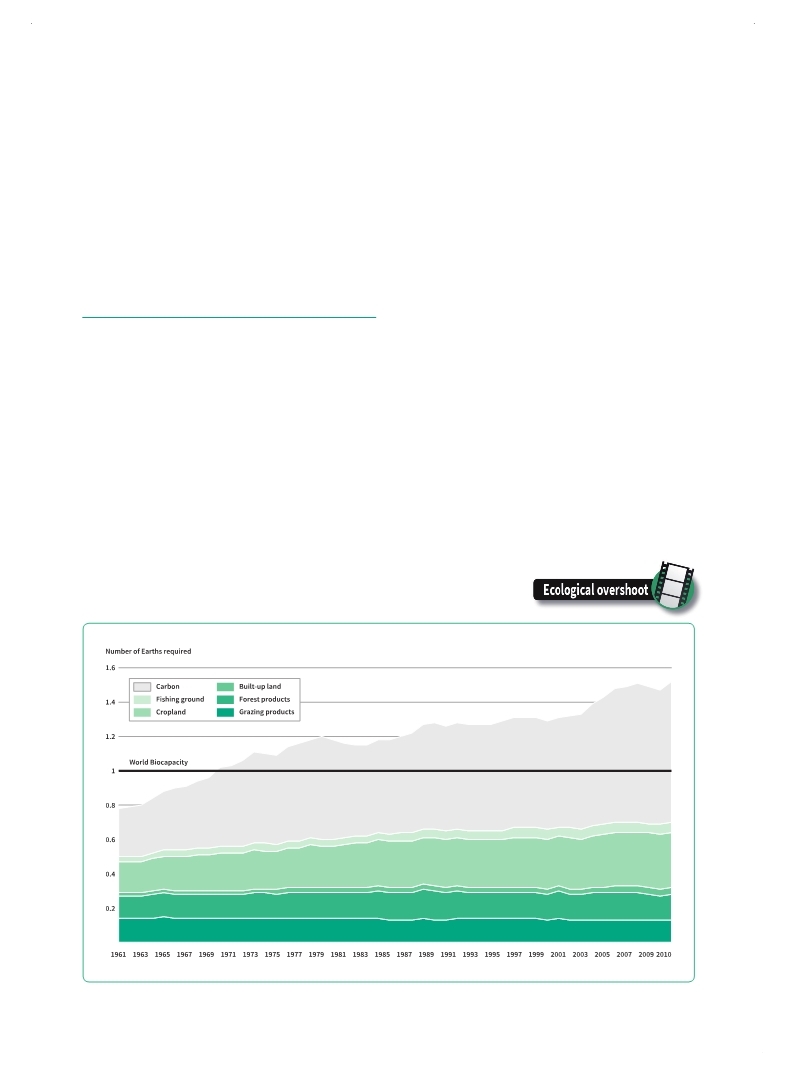 |
Global Assessment Report on Disaster Risk Reduction 2015
Making development sustainable: The future of disaster risk management |
 |
Global Assessment Report on Disaster Risk Reduction 2015
Making development sustainable: The future of disaster risk management |
|
|

230
Part III - Chapter 12
12.1In search of a missing planet
The global ecological footprint currently exceeds the earth’s biocapacity by far. Current economic growth models rely on high levels of CO2 emissions and the increasing consumption of environmental resources, including freshwater, forest and marine resources.
Today, the Fijian island village of Vunidogolo is still relatively unknown, but it is already on its way to making history. The permanent relocation of its entire population as a precaution against
rising sea levels made headlines in countless news outlets and social media posts. After the village suffered repeatedly from heavy floods and storms, the government of Fiji decided on this radical move, and in January 2014 all residents of Vunidogolo were relocated to higher ground.
Vunidogolo is not alone. More than 650 communities all over Fiji are threatened by loss of coastal land and damage to infrastructure from sea level rise and storm surges, and more than 40 communities have already been identified for relocation within the next 10 years.1 The people
Figure 12.1 Human demand already exceeds the planet’s capacities
(Source: Global Footprint Network, 2013.)
As overconsumption progressively overwhelms the capacity of planetary systems, risk to the world’s social and economic system as a whole is increasing to potentially catastrophic levels. Climate change, declining biodiversity and depleted water availability will lead to increasing disaster risks.
While the HFA has recognized the role of climate change in driving risk, its interpretation has not allowed full recognition of the fact that those risks are not evenly shared. Increased inequality transfers and concentrates those risks in low-income households, territories and economies.
|
 
Page 1Page 10Page 20Page 30Page 40Page 50Page 60Page 70Page 80Page 90Page 100Page 110Page 120Page 130Page 140Page 150Page 160Page 170Page 180Page 190Page 200Page 210Page 220Page 221Page 222Page 223Page 224Page 225Page 226Page 227Page 228Page 229Page 230Page 231->Page 232Page 233Page 234Page 235Page 236Page 237Page 238Page 239Page 240Page 241Page 242Page 243Page 244Page 250Page 260Page 270Page 280Page 290Page 300Page 310
|
|
 
|
 
|
